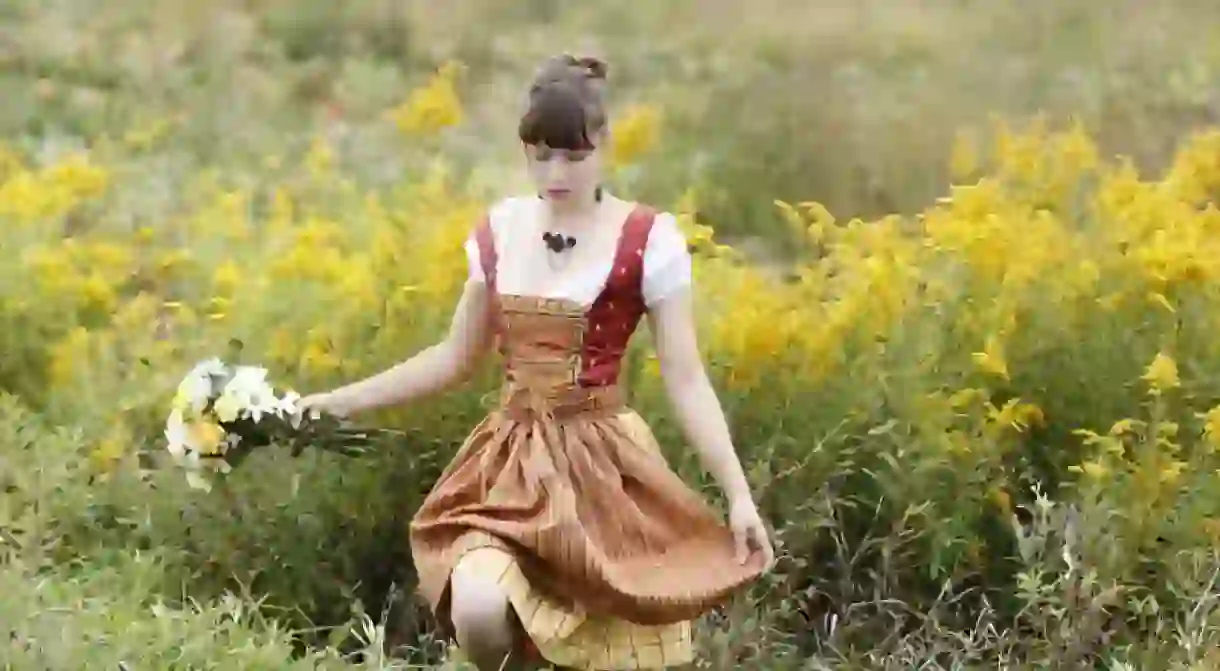Why Tracht Is Making a Comeback with Germany’s Millennials

For a while in the 19th century, about the time Germany was uniting into a country for the first time, dirndls and lederhosen were cool. Bavarians who didn’t work with their hands for a living wore clothes called tracht in German, as a symbol of their connection to the land, tradition, and homeland. It was part of building an identity.
These symbols, along with folk songs and other farm and mountain traditions, were then co-opted in the 1930s and ’40s by a group more skilled at branding than almost anyone else: the Nazis. Homeland meant purity, and that meant only one sort of person.
https://www.instagram.com/p/BDXwmFcNB3a/?taken-by=alpenmaedel
After the war, when even the merest hint of nationalism or pride was enough to give most Germans a panic attack, lederhosen- and dirndl-wearing was confined only to Omas, Opas (grandmas and grandpas), and that one weird uncle that went on and on about the gold standard.
https://www.instagram.com/p/BDDbo2LiB0y/?taken-by=gottseidank_com
Fast forward to millennials growing up in a world so interconnected it was difficult to build a solid identity that was connected to geography. Hipsters the world over went back 100 years and embraced the hair, clothes and jobs. In America this means there are a lot of bearded artisanal knife-makers dressed like lumberjacks with babies called Pearl. In Bavaria, the Texas of Germany, it means the dirndl is once again something that young women choose to wear.
Fashionwise, this is good news. A dirndl looks good on every body type and at every age. You would be forgiven for assuming the dirndl of the 21st century is shorter and more sexy than what was traditional. After all, no less than Karl Lagerfeld himself designed a punk dirndl collection in 2013.
https://www.instagram.com/p/BCxSNEoCB_O/?taken-by=gottseidank_com
In the main, though, the dirndl revival stayed far away from the Halloween risqué sort of outfits one might buy as a tourist at Oktoberfest, and has instead hewed closely the long skirts and higher necklines favored by Omas throughout Bavaria.
What has changed is the material: brightly-colored raw silk, English lace, hand stiched rhinestones, swirls instead of plain brown or grey, cotton or wool. Immigrants to Germany are also integrating the material and fabrics of their own culture with the iconic dirndl shape. The most well known of these designers are the Cameroonian sisters who make dirndls from the waxed cotton common in West Africa, decorated with shells instead of bits of antler. The results are jaw-dropping.
https://www.instagram.com/p/8Kviigl7mi/?taken-by=noh_nee
In the same way not all millennials are hipsters, not all young Bavarians wear tracht. But, if on your next holiday in Bavaria, Austria, or the South Tyrol, you find yourself in the countryside, at a wedding, funeral, birthday, anniversary party, baptism, or other such celebration where family tends to come together, chances are good it won’t be just the grey-hairs wearing tracht.
While the largest maker of traditional tracht, Angermaier, has made room in its collection for pieces made in the modern style, labels like Gott Sei Dank, Noh Nee, Alpenmädel, Silk & Pearls, and Strizi (Austria) specialize in tracht for the 21st century.
If you’re not quite ready to shell out €800 on a silk dirndl, but still want to bring a touch of Bavarian style back home, try a skirt from Rockmacherin, a new Bavarian label that is inspired by traditional shapes, patterns, and colors. Men can try Franzmüchinger in Munich.













